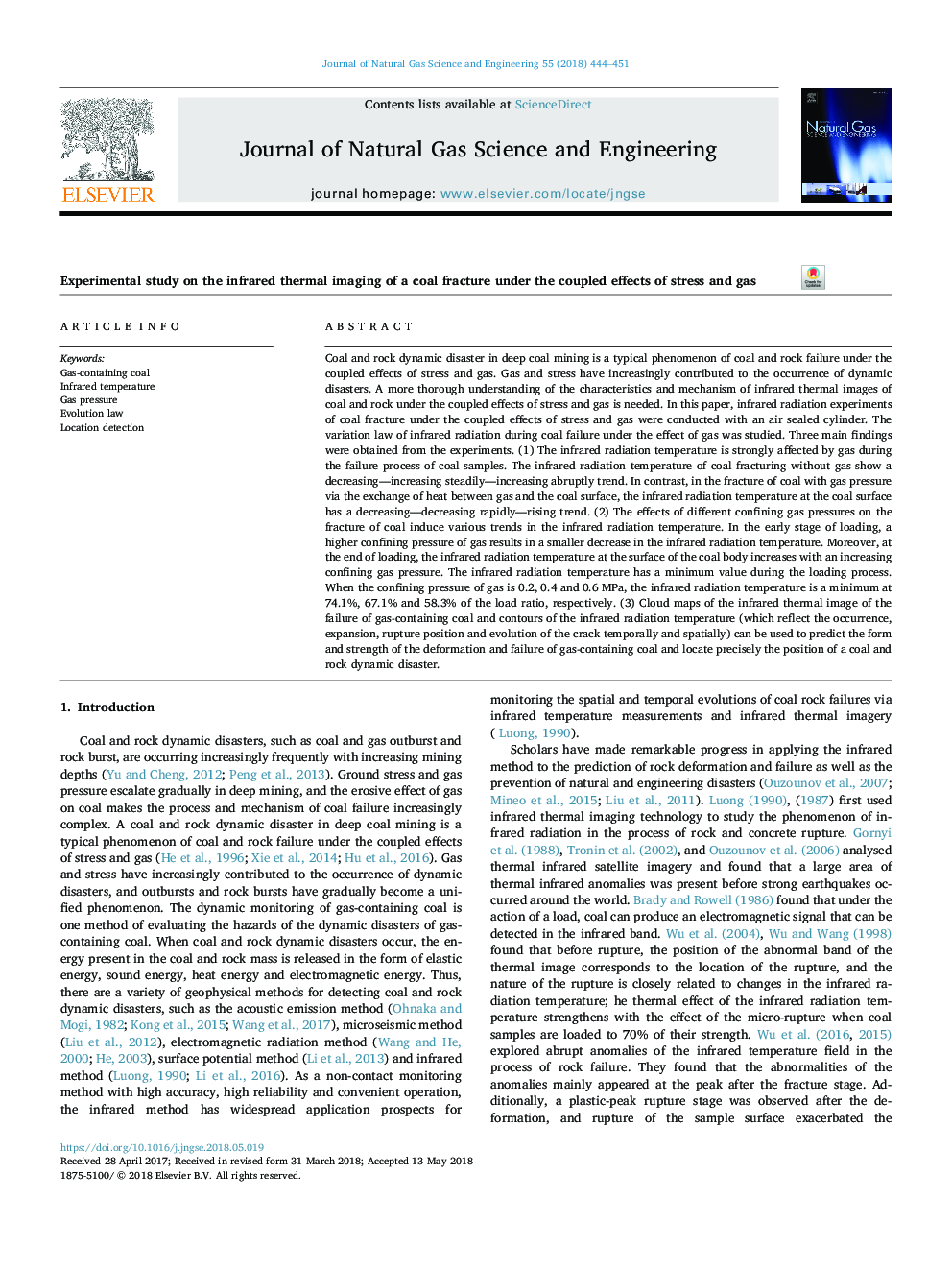| Article ID | Journal | Published Year | Pages | File Type |
|---|---|---|---|---|
| 8128046 | Journal of Natural Gas Science and Engineering | 2018 | 8 Pages |
Abstract
Coal and rock dynamic disaster in deep coal mining is a typical phenomenon of coal and rock failure under the coupled effects of stress and gas. Gas and stress have increasingly contributed to the occurrence of dynamic disasters. A more thorough understanding of the characteristics and mechanism of infrared thermal images of coal and rock under the coupled effects of stress and gas is needed. In this paper, infrared radiation experiments of coal fracture under the coupled effects of stress and gas were conducted with an air sealed cylinder. The variation law of infrared radiation during coal failure under the effect of gas was studied. Three main findings were obtained from the experiments. (1) The infrared radiation temperature is strongly affected by gas during the failure process of coal samples. The infrared radiation temperature of coal fracturing without gas show a decreasing-increasing steadily-increasing abruptly trend. In contrast, in the fracture of coal with gas pressure via the exchange of heat between gas and the coal surface, the infrared radiation temperature at the coal surface has a decreasing-decreasing rapidly-rising trend. (2) The effects of different confining gas pressures on the fracture of coal induce various trends in the infrared radiation temperature. In the early stage of loading, a higher confining pressure of gas results in a smaller decrease in the infrared radiation temperature. Moreover, at the end of loading, the infrared radiation temperature at the surface of the coal body increases with an increasing confining gas pressure. The infrared radiation temperature has a minimum value during the loading process. When the confining pressure of gas is 0.2, 0.4 and 0.6 MPa, the infrared radiation temperature is a minimum at 74.1%, 67.1% and 58.3% of the load ratio, respectively. (3) Cloud maps of the infrared thermal image of the failure of gas-containing coal and contours of the infrared radiation temperature (which reflect the occurrence, expansion, rupture position and evolution of the crack temporally and spatially) can be used to predict the form and strength of the deformation and failure of gas-containing coal and locate precisely the position of a coal and rock dynamic disaster.
Keywords
Related Topics
Physical Sciences and Engineering
Earth and Planetary Sciences
Earth and Planetary Sciences (General)
Authors
Zhonghui Li, Shan Yin, Yue Niu, Fuqi Cheng, Shuaijie Liu, Yanhui Kong, Yinghao Sun, Yang Wei,
